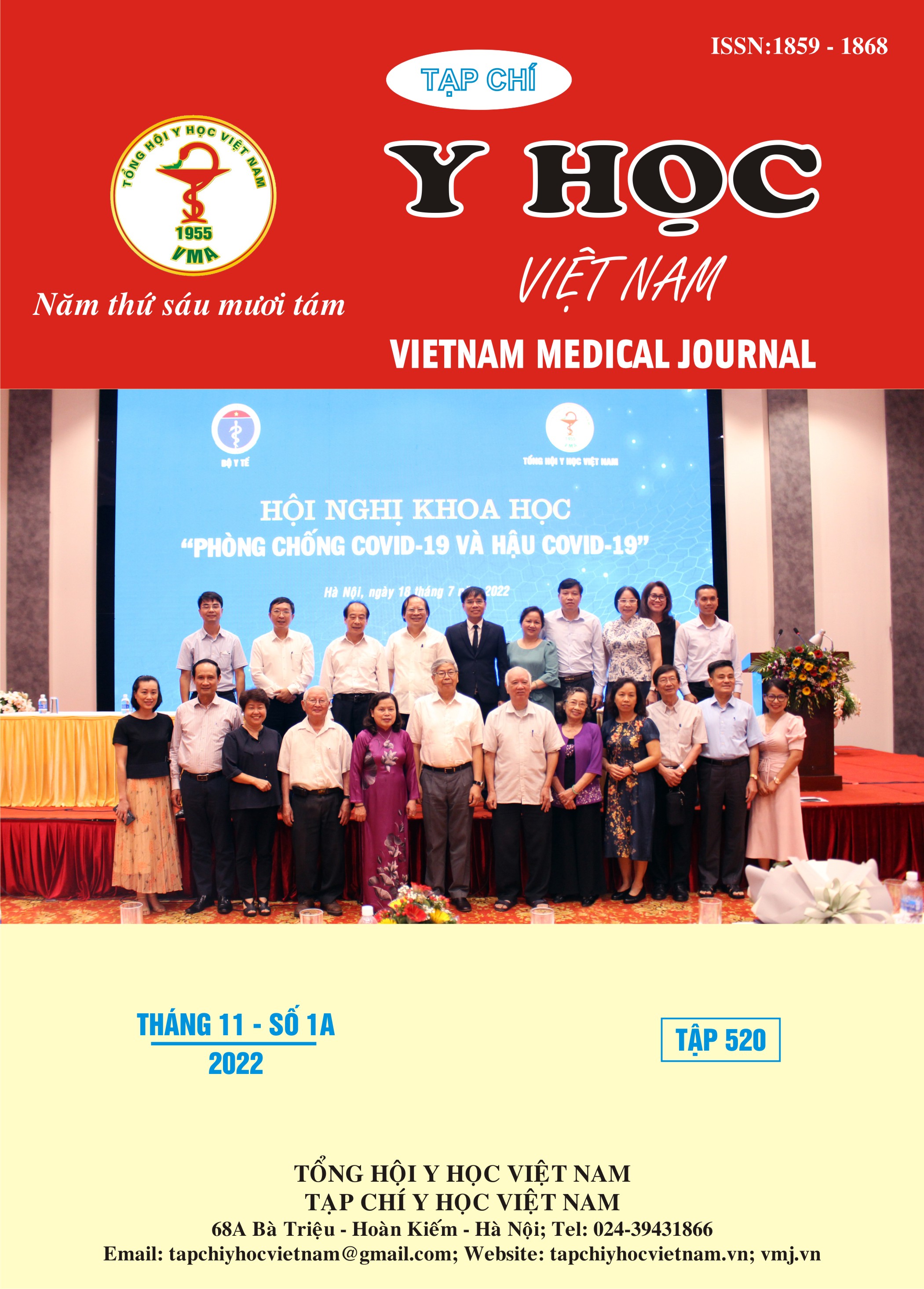INITIAL EVALUATION OF EFFECTIVENESS OF RUXOLITINIB FOR PRIMARY MYELOFIBROSIS IN HCMC BLOOD TRANSFUSION HEMATOLOGY HOSPITAL
Main Article Content
Abstract
Introduction: Primary myelofibrosis (PMF) is classified as myeloproliferative neoplasm (MPN) with various clinical and biological features. The pathogenesis mechanism lies in the abnormality of the JAK/STAT signaling pathway, which causes uncontrolled proliferation of blood cells along with fibrosis in the bone marrow. Ruxolitinib is one of the JAK inhibitors that has been approved for treating PMF. This report aims to describe the initial results of Ruxolitinib for patients with PMF in BTH. Methods: A retrospective, case series study of the PMF patients receiving Ruxolitinib in BTH from 2013 to August 2022. Results: Ten patients were included in this study. The median age was 63 years old. The number of male patients was more than the number of females. The most common clinical symptoms were anemia and splenomegaly. Eight patients carried JAK2V617F mutation. Most patients were categorized as high-intermediate or high-risk groups according to IPSS, DIPSS, and DIPSS plus criteria. After treatment of Ruxolitinib, 6/10 patients had improvements in spleen size, and 4/10 patients improved anemia status. The 5-year overall survival was 75%. Anemia and thrombocytopenia were the common complications of Ruxolitinib. One patient died from severe infection during treatment. Conclusion: Ruxolitinib was effective for PMF, but the frequent occurrence of complications requires strict follow-up during treatment.
Article Details
References
2. Cross, N.C., Genetic and epigenetic complexity in myeloproliferative neoplasms. Hematology Am Soc Hematol Educ Program, 2011. 2011: p. 208-14.
3. Harrison, C., et al., JAK inhibition with ruxolitinib versus best available therapy for myelofibrosis. N Engl J Med, 2012. 366(9): p. 787-98.
4. Rumi, E., et al., Clinical effect of driver mutations of JAK2, CALR, or MPL in primary myelofibrosis. Blood, 2014. 124(7): p. 1062-1069.
5. Tefferi, A., Primary myelofibrosis: 2021 update on diagnosis, risk-stratification and management. Am J Hematol, 2021. 96(1): p. 145-162.
6. Tefferi, A., M.R. Litzow, and A. Pardanani, Long-term outcome of treatment with ruxolitinib in myelofibrosis. N Engl J Med, 2011. 365(15): p.1455-7.
7. Verstovsek, S., et al., A double-blind, placebo-controlled trial of ruxolitinib for myelofibrosis. N Engl J Med, 2012. 366(9): p. 799-807.
8. Verstovsek, S., et al., Efficacy, safety, and survival with ruxolitinib in patients with myelofibrosis: results of a median 3-year follow-up of COMFORT-I. Haematologica, 2015. 100(4): p. 479-88.


